Getting Rhinoplasty in Korea
In Korea, rhinoplasty is a highly advanced procedure, often incorporating state-of-the-art techniques and technologies to achieve natural and aesthetically pleasing results. This article will cover the different types of rhinoplasty procedures available, explain why people choose to undergo this surgery, and outline the preparation steps involved for those coming to Korea. We will also delve into what patients can expect before, during, and after the procedure, and discuss the anticipated results. Lastly, we’ll highlight the importance of using a specialized medical tourism agency like Shin Medical to ensure a seamless experience from consultation to recovery.
Contents
What Is Rhinoplasty?
Rhinoplasty, commonly referred to as a “nose job,” is a surgical procedure designed to reshape or reconstruct the nose for both cosmetic and functional purposes. This versatile surgery can address a variety of concerns, including altering the size, shape, and symmetry of the nose, correcting breathing issues, or repairing nasal deformities caused by trauma or congenital conditions. In Korea, rhinoplasty is a highly advanced procedure, often incorporating state-of-the-art techniques and technologies to achieve natural and aesthetically pleasing results.
Types of Rhinoplasty
Listed below is an overview of the types of rhinoplasty available in Korea
1. Standard Rhinoplasty
Standard rhinoplasty covers the making of nose bridge, nose tip and nose tip support. When you do a rhinoplasty in Korea, standard rhinoplasty will be a mandatory to be included. Standard Rhinoplasty is needed to create a good basis for the new nose. This become the base of the whole rhinoplasty process.
- Nose bridge – Silicone or Goretex implant are used for bridge enhancement
- Nose tip – Doctor usually uses nasal cartilage or conchal cartilage (ear cartilage) to be grafted on the nose tip.
- Nose tip support – For nose tip support, doctor usually uses nasal cartilage or rib cartilage (donored or self-grafted).
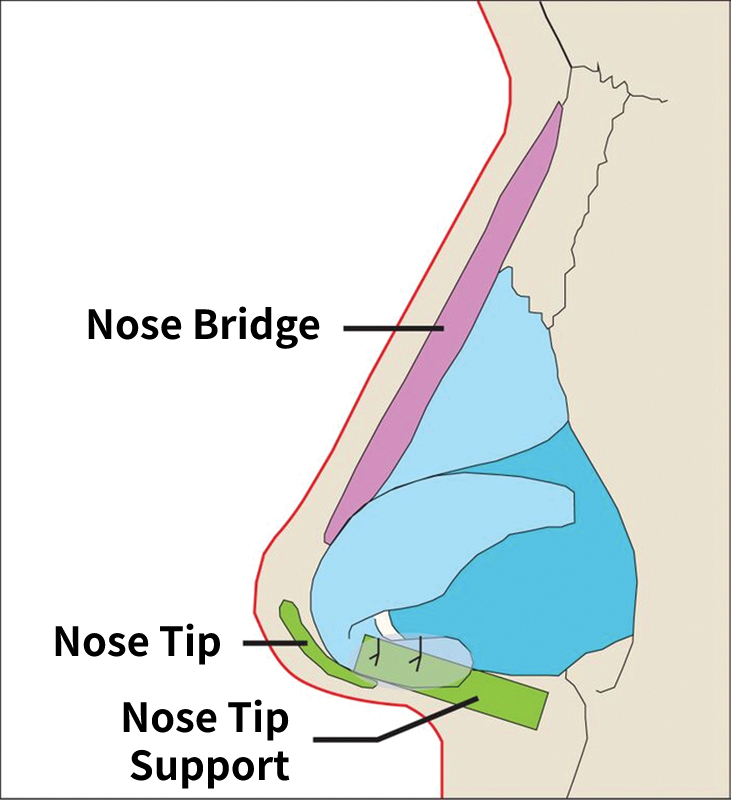
2. Long or Downward Pointing Nose
A downward pointed nose is where the tip of the nose is slightly lower than the nostrils, giving the nose an elongated appearance. This “long nose” effect, causes an imbalance to facial proportions. There are two methods for this surgery:
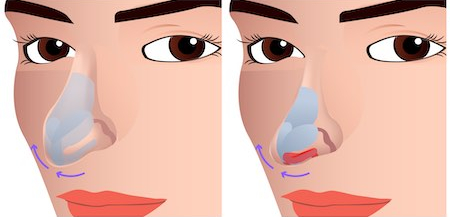
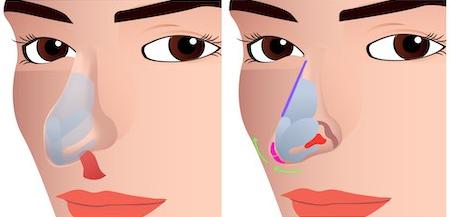
3. Short Upturned Nose
A short or upturned nose, is characterized by an upward pointing nose with a predominant display of nostrils. The surgeons we recommend for this treatment are very proficient in this procedure, which is important given how complex the treatment is. Depending on the severity, there are three methods:
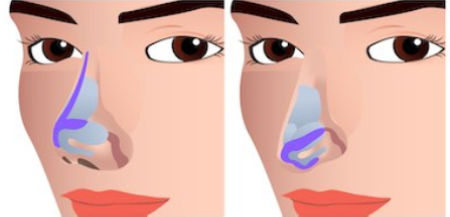
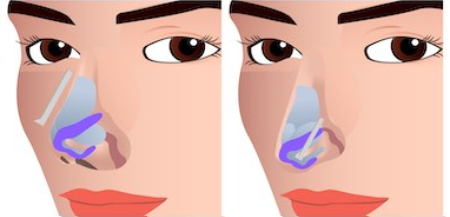
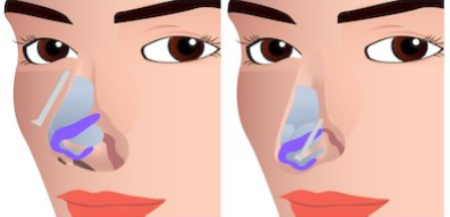
4. Deviated Nose
A deviated nose, or crooked nose, refers to a nose that does not follow a straight line down the center of your face. The degree of crookedness ranges from imperceptible, to more severe. While most of the time crooked noses are only cosmetic concerns, occasionally they may also affect your breathing and cause other dilemmas like headaches and nosebleeds. Causes of a crooked nose include: injuries, birth defects, previous surgery, and a deviated septum (the inside of the nose wall leaning towards one side).
Septoplasty is the general way in which a surgeon will repair a deviated septum. During septoplasty, your nasal septum is straightened and repositioned in the center of your nose. This may require your surgeon to cut and remove parts of your septum or bone before reinserting them in the proper position.
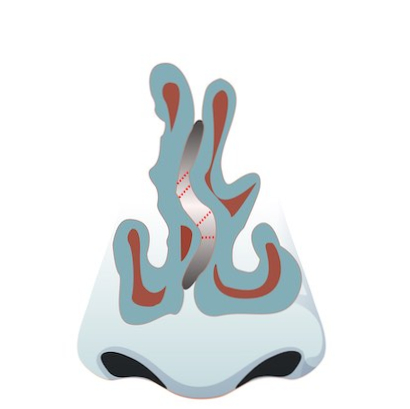
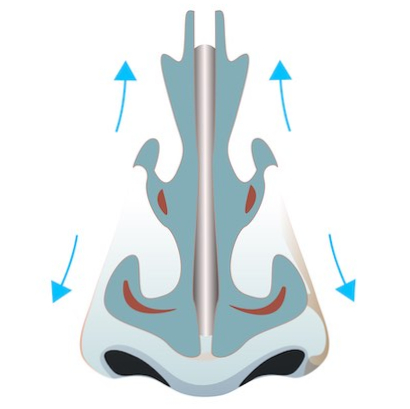
5. Hump Nose (Aquiline Nose)
Often described as a hooked or Roman nose, a hump nose is characterized as a bump on the bridge of the nose. A hump nose is usually due to family genetics. It could also be due to a previous injury. Hump nose surgery is the procedure whereby your surgeon will reduce the pronounced hump, also called the dorsal hump, on the bridge of the nose. Two methods exist for this issue:
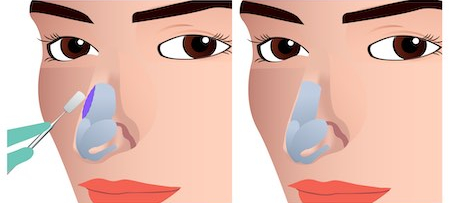
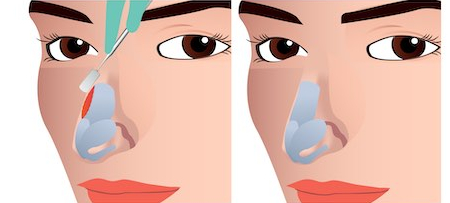
6. Wide Nose (Osteotomy)
The wide nasal bridge is characterized by a nose that looks broad and thick around the center of the bridge. It is most noticeable from a frontal view. This problem is due to the excess width or thickness of the nasal bones.
The undesirable width is typically treated using a technique called osteotomy. Osteotomy involves making controlled bone fractures which allows the nasal bones to be positioned inward, thereby narrowing the appearance of the nose. In some cases, further modification might be necessary and the surgeon will use an implant if that is the case.
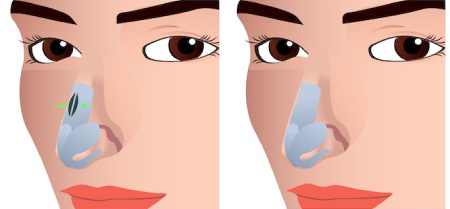
7. Nose Tip Surgery
Nose tip surgery is ideal if you are not satisfied with the overall shape or size of the nasal tip. This could be due to a nose with a blunt or bulbous tip, or a nasal tip that is asymmetrical. Tip rhinoplasty is a procedure which creates a more naturally sharp and symmetrical nasal tip, with the appropriate projection and proportion in relation to the rest of the nose. The surgeon will reshape cartilage, or remove the extra cartilage from the nasal tip when necessary. In some cases, the surgeon may also use implants to extend the nasal tip. Depending on the surgeon’s recommendations, they might lift up the tip and redefine the nostrils. There are three methods for this surgery:



8. Alar Reduction
The alar base is a complex three-dimensional shape between the nostrils, columella (tissue that links the nasal tip to the nasal base), cheek, and upper lip. An alar base reduction is a special procedure, designed to narrow the width of the nostril base. The surgery minimizes the appearance of overly prominent nostrils, presents a more attractive, and harmonious overall look. There are two surgical methods for alar reduction:


2. Limitations of Rhinoplasty
While rhinoplasty offers numerous benefits, it’s essential to understand its limitations and what it cannot accomplish:
- Age Limitations: Rhinoplasty is generally not recommended for individuals under 16-18 years old since their nasal structures may still be developing. Exceptions are made for specific congenital or trauma-related cases.
- Skin Type and Thickness: The nature of the patient’s skin can affect the results. Thicker skin may make it challenging to achieve sharper contours, while very thin skin can reveal imperfections underneath.
- Unlimited Shape Changes: There are anatomical and structural limits to how much the nose can be altered. Overly drastic changes can compromise nasal function and provide unnatural results.
- Immediate Results: Patients must be patient and have realistic expectations. Swelling and minor irregularities are common in the immediate aftermath of surgery. Final results might take up to a year to fully materialize.
- Complete Perfection: Rhinoplasty can significantly enhance appearance and functionality, but it can’t guarantee absolute symmetry or complete perfection. Minor asymmetries are normal and often unavoidable.
- Risk of Complications: Like any surgical procedure, rhinoplasty carries risks like infection, bleeding, or adverse reactions to anesthesia. Unsatisfactory surgical outcomes may require revision surgeries.
- Psychological Considerations: Rhinoplasty should not be used as a solution for broader psychological issues or body dysmorphic disorders. It’s crucial to have healthy and realistic expectations.
How To Prepare for a Rhinoplasty in Korea
Korea is renowned for its highly specialized and innovative approach to rhinoplasty, employing techniques such as:
- 3D Imaging and Planning: Allows for highly detailed pre-surgical planning and outcome visualization.
- Minimal Invasive Techniques: Reduces recovery time and minimizes scarring.
- Combination Procedures: Can address multiple aesthetic concerns in one surgery, such as combining rhinoplasty with chin augmentation for a balanced profile.
With experienced surgeons, cutting-edge technology, and a focus on natural-looking results, Korea remains a top destination for individuals seeking high-quality rhinoplasty procedures. Whether for cosmetic enhancement or functional improvement, rhinoplasty in Korea promises exceptional outcomes tailored to each patient’s unique needs.
Getting ready for a rhinoplasty procedure involves several crucial steps to ensure a smooth journey and successful outcome. Here’s a comprehensive guide on how to prepare for rhinoplasty surgery in Korea, from initial consultation to meticulous planning for the recovery period.
Initial Consultation
- Connecting with a Medical Tourism Agency: Engage with a reputable medical tourism agency like Shin Medical that specializes in rhinoplasty. They can assist with consultations, finding the best clinics, translations, and overall coordination.
- Initial Consultation with a Plastic Surgeon: Schedule a consultation where the surgeon will discuss your goals, review medical history, and evaluate your nasal structure. Shin Medical can facilitate this meeting and provide translator services if needed.
- Medical History and Exam: Provide comprehensive details about your medical history, any previous surgeries, and current medications. The surgeon will perform a physical exam and possibly take photographs for surgical planning.
- Medication Review: Inform the surgeon about all medications, supplements, and vitamins you’re taking. You might be advised to stop certain medications like aspirin and anti-inflammatories that can increase bleeding risk.
- Setting Expectations: Discuss your aesthetic goals and functional needs in detail. The surgeon will use imaging tools to show potential outcomes, helping set realistic expectations.
Pre-Surgery Instructions
- Medical Tests: Complete any required pre-surgery lab tests or evaluations.
- Smoking and Alcohol: Avoid smoking and alcohol consumption several weeks before surgery, as they can impair healing.
- Medications and Fasting: Cease taking blood-thinning medications and follow any other specific medication guidelines provided by your surgeon. Fast as instructed, usually from the night before the surgery.
- Arrival in Korea: Plan to arrive in Korea a few days before the surgery date to acclimate and complete any necessary pre-op appointments.
Recovery Preparations
- Post-Surgery Care: Arrange for someone to assist you during the recovery period, especially in the first few days post-surgery. Shin Medical can help organize nursing care if needed.
- Comfortable Environment: Prepare a comfortable, clean space for recuperation. Stock up on soft foods, hydration supplies, and any required medications.
- Travel Arrangements: Ensure you’ve planned your travel to include ample time for initial recovery before you fly back home.
What to Expect from the Rhinoplasty Procedure
Understanding what happens before, during, and after your rhinoplasty procedure can help you feel more at ease and prepared.
- Surgical Setting: The surgery will take place in a sterile, fully accredited medical facility, either a hospital or a specialized clinic.
- Types of Anesthesia: Rhinoplasty is typically performed under general anesthesia, although local anesthesia with sedation is an option for less extensive procedures.
- Incision Options: Closed rhinoplasty, Incisions are made within the nostrils, leaving no visible scars. Open rhinoplasty, a small incision is made across the columella (the tissue between the nostrils), allowing better access for more complex adjustments, with minimal scarring that generally fades over time.
- Procedural Steps: Your surgeon will reshape the nasal structure by removing or adding bone and cartilage as needed. Grafts might be used to support new shapes. Once the structure is reshaped, the nasal skin and tissues are redraped and incisions sutured.
- Immediate Post-Op: You’ll be monitored in a recovery room until the anesthesia wears off. Your nose will likely be splinted and possibly packed to support the healing structure.
- Common Symptoms: Swelling and bruising around the eyes and nose are normal and will peak a few days post-surgery. Pain can be managed with prescribed medications.
Surgery Time
Rhinoplasty (nose job) takes around 2-3 hours
Hospital Stay
You do not need to stay in the hospital after surgery.
Days in South Korea
We suggest you stay at least 8 days after surgery.
Recovery
It takes 1 to 2 weeks to recover from Rhinoplasty (nose job).
Rhinoplasty Aftercare Instructions:
To minimize swelling after your rhinoplasty, it is crucial to keep your head elevated. This simple action can significantly reduce post-operative swelling and discomfort. Additionally, it’s essential to avoid strenuous activities and heavy lifting for several weeks to prevent complications and ensure proper healing. Compliance with your prescribed medication regimen is vital for managing pain and fostering recovery. It’s equally important to diligently clean the incision sites as instructed by your surgeon and to take care of any dressings or splints as directed.
Your recovery will include several routine check-ups to monitor healing, remove splints or stitches, and address any concerns. These follow-up appointments are critical to ensure that your recovery is on track and to make any necessary adjustments.
Long-term self-care involves protecting your new nasal structure from trauma and sun exposure. Maintaining a healthy lifestyle will also support your overall healing and well-being. Patience is key, as full recovery and the realization of final results can take up to a year. By adhering to these guidelines and leveraging the expertise of a specialized medical tourism agency like Shin Medical, you can ensure a well-coordinated and successful rhinoplasty journey in Korea.







